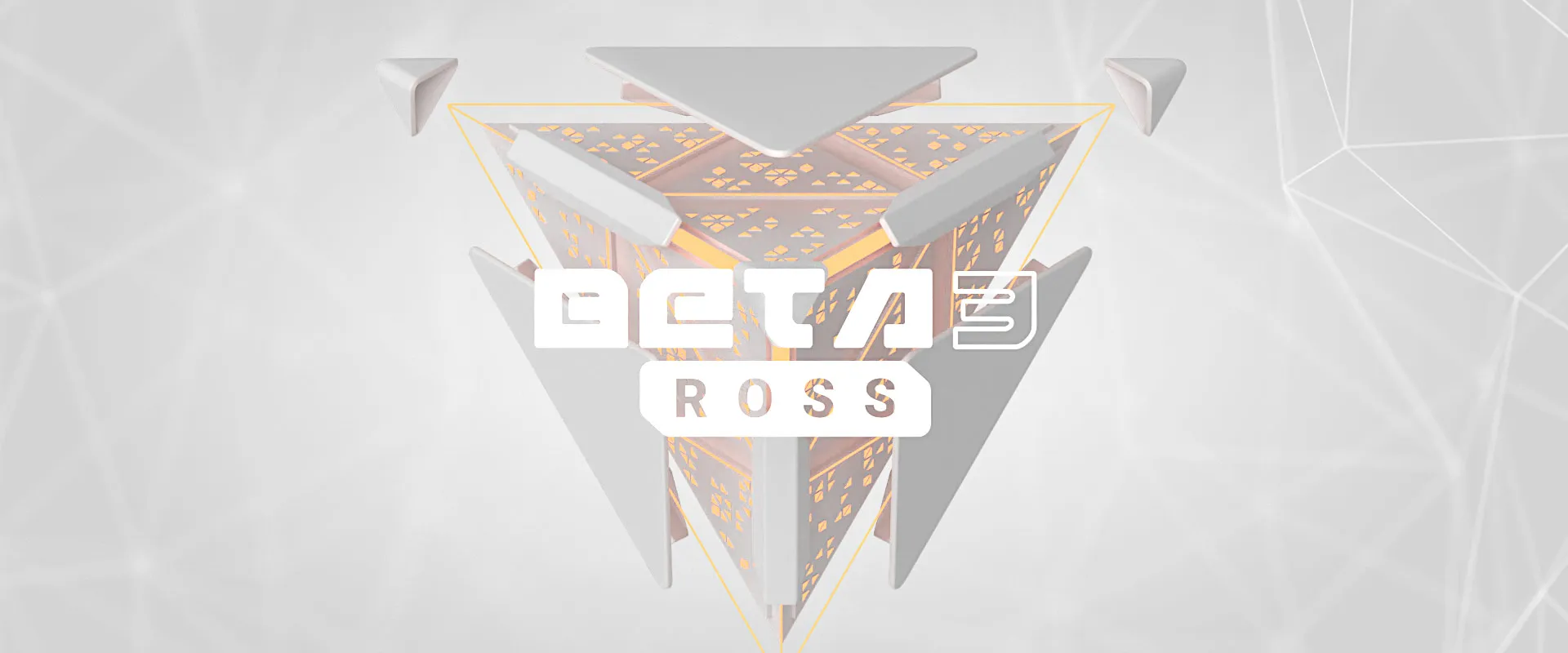We’re pleased to announce the first Release Candidate of EdgeDB. In a few weeks, we’ll release RC2, followed shortly thereafter by a long-awaited stable 1.0 release. Follow @edgedatabase to stay apprised of new releases.
In the meantime: if you’re looking to build something with the future of relational databases: now is the time to start!
This release is called Epsilon Eridani, named (as always) after a nearby star. Epsilon Eridani is a mere 10.5 lightyears away and a sprightly 800 million years old. In Isaac Asimov’s Foundation series (which just premiered as a series on Apple TV+!), its solar system contained the first planet colonized by non-Spacer Earthmen. In reality, neither of its two confirmed planets are believed to be habitable. Nice try, Isaac.
As we rapidly approach 1.0, we continue to squash bugs, refine our documentation, and streamline development and deployment workflows. Click a link below to jump to the appropriate section of the post.
What is EdgeDB?
If you haven’t heard of EdgeDB yet, it’s a next-generation open source relational database with an obsessive focus on developer experience. Featuring:
-
a declarative, object-oriented schema modeling system with multiple inheritance, key-less relations, computed properties, JSON support, and more
-
a next-generation query language called EdgeQL, featuring JOIN-less nested fetching, composable subquerying, and an extensive standard library
-
performant, first-party database clients for JavaScript/TypeScript, Python, and Go that implement our blazing fast binary protocol
-
a unified
edgedbCLI with idiomatic workflows for managing instances, opening REPLs, and creating and applying migrations -
built-in REST and GraphQL endpoints
And plenty more. Our goal is to modernize every aspect of the database developer experience. Check out the 10-minute quickstart to learn more.
Upgrading/installation
To get started, install the latest version of our CLI.
For first-time users:
Go through our 10-minute Quickstart; it’ll walk you through the process of installing EdgeDB, spinning up an instance, creating/executing a migration, and running your first query.
For previous users:
Just run edgedb cli upgrade and the CLI will self-upgrade. If you have
local instances on your machine you’ll need to upgrade those too:
-
If you’re using
edgedb project, navigate to the root directory of your project and runedgedb project upgrade --to-latest. This will install the latest version of EdgeDB, upgrade the instance, migrate the data, and update youredgedb.toml. -
To upgrade an instance that isn’t linked to a project (not recommended), run
edgedb instance upgrade <instance_name> --to-latest.
Now onto the new features.
Remote instance linking
Remote EdgeDB instances can now be “linked” to your machine with the edgedb
instance link command.
$ edgedb instance link --dsn edgedb://username:password@hostname.com:5656
Specify a new instance name for the remote server [default: hostname_5656]:
> hostname_5656
Successfully linked to remote instance. To connect run:
edgedb -I hostname_5656You now have a remote instance named hostname_5656. You can now refer to
this instance by its name just like a local instance. You can even link this
instance to a local project during the edgedb project init workflow:
$ edgedb project init
Found `edgedb.toml` in `/path/to/dir`
Initializing project...
Specify the name of EdgeDB instance to use with this project:
> hostname_5656
# initialization...
Project initialized.
To connect to hostname_5656, run `edgedb`High Availability Postgres support
EdgeDB runs on top of Postgres. Commonly, EdgeDB internally manages its own Postgres instances, but it can also be run on top of a cloud- or self-hosted Postgres.
API-based HA
Some cluster management tools are capable of emitting events when the leader node fails. In this case, EdgeDB automatically listens to these events and directs all queries to the current leader node.
To indicate to EdgeDB that API-based HA is possible with your setup, specify
the appropriate protocol in your --backend-dsn. Currently EdgeDB only
supports API-based HA when using
Stolon as the backend in a
Consul-based setup.
-
stolon+consul+http:// -
stolon+consul+https://
Adaptive HA
Most cloud-based Postgres hosting services are DNS-based; these systems update DNS records with the IP address of the current leader node. There’s no direct way for EdgeDB to get notified of failover events; instead, EdgeDB uses some heuristics and an internal state machine to determine when a backend has initiated failover. For details on this implementation, check out the Backend HA docs.
When failover is detected, EdgeDB terminates and re-establishes all connections with the backend. Since EdgeDB doesn’t cache resolved DNS values, the new connections will be established to the new leader node.
Enable adaptive HA with the --enable-backend-adaptive-ha flag like so:
$
edgedb-server \
--backend-dsn postgres://xxx.rds.amazonaws.com \
--enable-backend-adaptive-haGlobal CLI configuration
You can now persistently customize the behavior of the CLI and REPL across your
system with a global configuration file. Just create a file called cli.toml
in your EdgeDB config directory. The location of this directory differs between
operating systems; to find its location on your system, run edgedb info.
$ edgedb info
EdgeDB uses the following local paths:
┌────────────┬─────────────────────────────────────────────────────────────────┐
│ Cache │ /Users/colinmcd94/Library/Caches/edgedb/ │
│ Config │ /Users/colinmcd94/Library/Application Support/edgedb/ │
│ CLI Binary │ /Users/colinmcd94/Library/Application Support/edgedb/bin/edgedb │
│ Data │ /Users/colinmcd94/Library/Application Support/edgedb/data/ │
│ Service │ /Users/colinmcd94/Library/LaunchAgents/ │
└────────────┴─────────────────────────────────────────────────────────────────┘Navigate to the directory labelled “Config” and create a file called
cli.toml with the following structure. All fields are optional.
[shell]
expand-strings = true # Stop escaping newlines in quoted strings
history-size = 10000 # Set number of entries retained in history
implicit-properties = false # Print implicit properties of objects
implicit-limit = 100 # Set implicit LIMIT
# Defaults to 100, specify 0 to disable
input-mode = "emacs" # Set input mode. One of: vi, emacs
output-format = "default" # Set output format.
# One of: default, json, json-pretty, json-lines
print-stats = false # Print statistics on each query
verbose-errors = false # Print all errors with maximum verbosityCardinality assertion
RC1 introduces a new top-level function assert_exists, the complement of
assert_single (which was introduced in Beta 3). Calling assert_exists
on an expression ensures at runtime that it includes at least one element; if
the set is empty, an error is thrown.
db>
SELECT assert_exists((SELECT User FILTER .name = "Existing user")){default::User {id: ...}}
db>
SELECT assert_exists((SELECT User FILTER .name = "Nonexistent user"))ERROR: CardinalityViolationError: assert_exists violation: expression returned an empty set.
Notably, the function enables the declaration required computed links and
properties in object types, which was not previously possible.
Enforcing distinctness in computed links
In the documentation, we use the term set to refer to the result of an EdgeDB expression; strictly speaking, though, EdgeDB sets are actually multisets, as they can contain duplicate elements in certain cases.
Until now, EdgeDB treated “real” and computed links differently. All “real” links were guaranteed to return a distinct set of results — no duplicates. This is implicitly enforced by how EdgeDB persists links under the hood. However, computed links weren’t subject to this constraint.
This is problematic. Practically speaking, an application’s logic may be written in such a way that it doesn’t expect duplicates in the results of a query. Philosophically speaking, this inconsistency runs counter to the design principles of EdgeDB.
So we fixed it. All computed links must now correspond to expressions that are guaranteed to be distinct. If this guarantee cannot be inferred, EdgeDB will throw an error during query compilation.
In most cases, distinctness can be properly inferred; however, subqueries
containing UNIONs and FOR loops may return sets with duplicates. To
accommodate this new constraint, users may either use the existing DISTINCT
operator (which eliminates all duplicates from its operand) or the new
std::assert_distinct assertion function.
Using std::assert_distinct is preferable in certain situations becauase it
preserves the order of the result set, unlike DISTINCT. If you don’t
expect duplicates to occur in your computed link, use std::assert_distinct;
if you do, use DISTINCT.
Restructured documentation
We’ve made some changes to the structure of our documentation to make it more approachable for new users.
-
The reference documentation for all built-in operators and functions has been moved from the EdgeQL section to a new top-level section called Standard Library. The EdgeQL section still contains breakdowns of the major concepts and language constructs.
-
We’ve merged the Quickstart and Cheatsheets page into a unified Guides section. We’ve also written several new guides on broadly useful subjects like Updating Data and Defining Object Types.
Wrapping up
For a full breakdown of the bug fixes and stability improvements in RC1, check out the full Changelog.
Looking to learn more about EdgeDB?
-
If you’re just starting out, go through 5-minute Quickstart guide.
-
To dig into the EdgeQL query language, try the web-based interactive tutorial — no need to install anything.
-
For an immersive, comprehensive walkthrough of EdgeDB concepts, check out our illustrated e-book Easy EdgeDB. It’s designed to walk a total beginner through EdgeDB, from the basics all the way through advanced concepts.
To keep tabs on future announcements, follow us on Twitter @edgedatabase!


